Papers by Vanessa Baratella
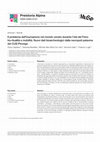
Il problema dell'inumazione nel mondo veneto durante l'età del Ferro tra ritualità e mobilità. Nuovi dati bioarcheologici dalla necropoli patavina del CUS-Piovego, 2023
The inhumation in Veneto represents an important topic in the panorama of studies on the Early an... more The inhumation in Veneto represents an important topic in the panorama of studies on the Early and Middle Iron Age in northern Italy. To better define this issue and propose new interpretative hypotheses based on both the information from old excavations and recently published/revised data, the centers of Este and Padua were chosen as case studies and, in
this framework, the CUS-Piovego cemetery of Padua was specifically analyzed. The cemetery, dated between the middle of the 6th and the middle of the 4th centuries BCE, returned cremations – prevailing – inhumations, horse burials, and the burial of a man and a horse.
Since according to the most accredited archaeological interpretations about the inhumation phenomenon in Veneto, the inhumed individuals might have been foreigners and/or belonged to a lower social rank, a strontium isotope (87Sr/86Sr) analysis was performed on 19 inhumed individuals of the CUS-Piovego cemetery to highlight possible relations between funerary rituals and mobility dynamics at the site.
Preistoria Alpina , 2023
Articolo / Article Il problema dell'inumazione nel mondo veneto durante l'età del Ferro tra ritua... more Articolo / Article Il problema dell'inumazione nel mondo veneto durante l'età del Ferro tra ritualità e mobilità. Nuovi dati bioarcheologici dalla necropoli patavina del CUS-Piovego
Articolo / Article La diffusione dell'iconografia dei fermagli di cintura con decorazione a giorn... more Articolo / Article La diffusione dell'iconografia dei fermagli di cintura con decorazione a giorno Tipo 5 di Verucchio tra mondo villanoviano e mondo hallstattiano sud-orientale. Riflessioni sul significato del fenomeno tra meccanismi di mobilità e dinamiche identitarie
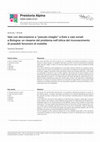
Vasi con decorazione a “pseudo intaglio” a Este e vasi zonati a Bologna: un riesame del problema nell’ottica del riconoscimento di possibili fenomeni di mobilità, 2023
Nel corso del pieno VII e del VI secolo a.C. è possibile riconoscere la presenza, in alcune tombe... more Nel corso del pieno VII e del VI secolo a.C. è possibile riconoscere la presenza, in alcune tombe di rango elevato, di vasellame decorato secondo la tecnica tipicamente bolognese dello “pseudo intaglio” a Este e di ceramica dipinta a fasce rosse e nere di tradizione veneta a Bologna.
Una nuova riflessione sulle attestazioni di manufatti ceramici alloctoni in sepolture aristocratiche dei due centri ha permesso di portare alla luce differenti prospettive di lettura del fenomeno, legate in particolar modo alla diversa natura dei contesti esaminati. I casi studio qui presentati si riferiscono, per il centro atestino, alla tomba 36 di Carceri d’Este e ad un
esemplare sporadico proveniente da una delle necropoli della città, mentre per Bologna sono state analizzate le tombe 21 e 22 della necropoli di Piazza VIII Agosto unitamente ad un’olletta/boccale probabilmente parte del corredo della tomba 8 del sepolcreto ex Manifattura Tabacchi. Il riesame di queste evidenze ha consentito di approfondire l’osservazione delle
dinamiche di mobilità orizzontale non solo di specifici manufatti, ma anche di individui e di un particolare know-how artigianale.

Archeologia Veneta, 2022
The article provides information on the preliminary steps of the CA.RI.PA.RO. Project of Excellen... more The article provides information on the preliminary steps of the CA.RI.PA.RO. Project of Excellence “The earliest foundry of pre-Roman Padua”. It focuses on the micro stratigraphic excavation of a block of archaeological deposits isolated from the site of Padua’s Questura/Riviera Ruzante in 2000-2001, containing part of a stratigraphic sequence related to a metallurgical workshop from the 8th century BC. This paper briefly outlines the history of the excavation, one of the most important urban excavations in Padua, and the circumstances that led to the transport of the block to the Archaeology Laboratories of the Department of Cultural Heritage of the University of Padua. It then briefly presents the excavation of the block itself, with the display of a perfectly preserved and well built substructure of ceramic sherds, and the discovery of ancient surfaces
related to the working of copper/bronze and hard animal materials (especially stag antler). The pottery from the substructure is largely composed by fragments of ollae, well preserved and temporarily reassembled: the forms are discussed in terms of typology and local association, and documented through 3D reconstructions.
A single vessel with applied decoration in relief, placed exactly in the centre of the substructure, is carefully studied and experimentally reproduced, to investigate its construction techniques and draw new socio-technical implications.
Heritage, 2023
This article is an open access article distributed under the terms and conditions of the Creative... more This article is an open access article distributed under the terms and conditions of the Creative Commons Attribution (CC BY
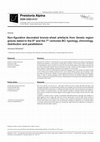
During the 8th and the 7th centuries BC, bronze-sheet artefacts related to the sphere of feasting... more During the 8th and the 7th centuries BC, bronze-sheet artefacts related to the sphere of feasting and
drinking are attested in a few graves of ruling elites’ members of pre-Roman Veneto. The diffusion
of these artefacts, which is known to involve not only the Veneto region and the Italic peninsula, but
the whole central and eastern Europe during the Iron Age, testifies the wide-ranging circulation of
these objects of high prestige, assumed by the leaders of communities.
The aim of this work is to systematically analyse the typology of bronze vessels and objects linked
to the drinking and feasting sphere found in proto-urban Veneto graves and comparing it with
the large and well known sample of bronze-sheet productions of the extra-Veneto and European
areas, in order to identify analogies and/or differences between the artefacts diffused in different
cultural contexts during the same time span, deepening the chronological and distributive reflection
connected to this topic.
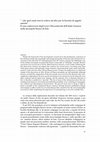
Within the framework of the investigations carried out in the protohistoric cemeteries of Este (P... more Within the framework of the investigations carried out in the protohistoric cemeteries of Este (Padua), besides the remarkable and unexpected quality of the data derived from the excavations at the end of the 19 th and beginning of the 20 th century, emerges the emblematic case of the southern necropolis, located in the Nazari countryside, in "Morlungo" contrada. First excavation was carried out in 1879 by Abbot Francesco Soranzo, a local erudite. Following the first discoveries, Soranzo investigate this cemetery for several years, excavating more than 2.000 square metres and reporting a huge cemetery, characterised by stone circles and kerbs, trachyte roads and more than 300 pre-Roman graves. Despite the publication of a dedicated volume of the discoveries in 1885, all data of Nazari necropolis are still unreliable: although Soranzo recorded the composition of the grave goods, once arrived at the Museum, they were completely compromised, the grave goods associations were not preserved, the materials were confused and the plans were missing. All the material, now at National Museum of Este is therefore considered as "sporadic". The loss of most of the information about this site resulting from Soranzo's excavations precluded the possibility of re-evaluating its topographical, cultural and chronological characteristics. e present work aims to bring to light as much as possible of the exceptional Nazari cemetery through Soranzo's published writings encouraging to reflect on the loss of archaeological data caused by the old, non-stratigraphic excavations, while underlining the importance of reinterpreting ex novo the available data.
ARQUEO MEDITERRÀNIA 15/2020_Iron Metallurgy and the Formation of Complex Societies in the Western Mediterranean (1st Millennium BC), 2020
Northern Italy followed a common developmental trend regarding the timing and manner of the intro... more Northern Italy followed a common developmental trend regarding the timing and manner of the introduction of iron. The new metal appeared in the 8 th century BC. Both in the Venetian and Golasecca areas, the first iron artefacts were found almost exclusively in graves belonging to the highest-ranking members of aristocracy. In the 7 th century BC, the use of iron progressively spread and underwent a differentiation. The 6 th century marked a clear and general turning point: a substantial increase in iron artefacts, especially some classes, such as knives and work tools: this explosion of iron working was closely connected to the use of the new metal for its intrinsic properties.
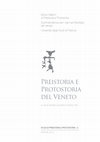
impaginazione e grafiCa Matteo Annibaletto con il sostegno di iSbn 978-88-6045-056-2 grafiChe ant... more impaginazione e grafiCa Matteo Annibaletto con il sostegno di iSbn 978-88-6045-056-2 grafiChe antiga spa via delle Industrie, 1 -31035 Crocetta del Montello (TV), tel. 0423 6388 fax 0423 638900 email: servizioclienti@graficheantiga.it sito web: www.graficheantiga.it dedicato a Giulia Fogolari e a Piero Leonardi INDICE 13 giovanni Leonardi, vinCenzo tiné, Premessa Paleolitico e Mesolitico 17 marCo pereSani, Il Pa leo litico e il Mesolitico del Veneto 33 aLberto brogLio, Il Protoaurignaziano del Veneto nel contesto europeo 43 federiCa fontana, antonio guerreSChi, Stefano bertoLa, maria giovanna Cremona, fabio CavuLLi, Laura faLCeri, aLeSSia gajardo, CyriL montoya, matar ndiaye, davide vi-Sentin, I livelli più antichi della serie epigravettiana "interna" di Riparo Tagliente: sfruttamento delle risorse litiche e sistemi tecnici 53 matteo romandini, Stefano bertoLa, niCoLa nannini, Nuovi dati sul Pa leo litico dei Colli Berici: risultati preliminari dello studio archeozoologico e delle materie prime litiche della Grotta del Buso Doppio del Broion (Lumignano, Longare, Vicenza) 61 roSSeLLa duCheS, miCheLe baSSetti, eLiSabetta fLor, KLauS KompatSCher, maria hrozny KompatSCher, Stefano neri, giampaoLo daLmeri, Trasformazione della mobilità epigravettiana durante il Dryas recente: nuove informazioni dalle ricerche in territorio trentino 69 federiCa fontana, franCeSCo vaLLetta, urSuLa thun hohenStein, Stefano bertoLa, antonio guerreSChi, gabrieLLa petruCCi, Sara zanini, maria Chiara turrini, Il sito VF1 settore III di Mondeval de Sora (San Vito di Cadore, Belluno): nuovi dati sull'occupazione mesolitica delle Dolomiti bellunesi Neolitico 79 vinCenzo tiné, Il Neo litico in Veneto 95 annaLuiSa pedrotti, paoLa SaLzani, fabio CavuLLi, martina Carotta, diego angeLuCCi, LuCiano SaLzani, L'insediamento di Lugo di Grezzana (Verona) nel quadro del primo Neolitico padano alpino 109 mauro rottoLi, fabio CavuLLi, annaLuiSa pedrotti, L'agricoltura di Lugo di Grezzana (Verona): considerazioni preliminari 117 vinCenzo tiné, paoLa mazzieri, niCoLa daL Santo, fiorenzo fuoLega, Il villaggio neolitico del Dal Molin a Vicenza 129 vinCenzo tiné, eLena nataLi, LuCa SCioLa, niCoLa daL Santo, fiorenzo fuoLega, Il sito del Neolitico recente e finale di Castelnuovo di Teolo (Padova). Nuovi dati 139 maria angeLiCa borreLLo,"Chassey", "Lagozza" e "Chassey/Lagozza": nuove osservazioni su materiali ceramici del Veneto 6 INDICE Eneolitico 147 danieLa CoCChi geniCK, Le evidenze venete nel quadro dell'Eneolitico dell'Italia settentrionale 157 eLodia bianChin Citton, CLaudio baLiSta, aLex fontana, niCoLetta martineLLi, CarLo mondini, umberto teCChiati, Il sito del Col del Buson (Belluno) nella Valle dell'Ardo: aspetti geomorfologici, strutturali, culturali e paleoeconomici delle stratificazioni dell'Età del rame 169 paoLa SaLzani, La piattaforma triangolare di Arano (Cellore di Illasi, Verona) nel quadro dei contesti cultuali dell'Età del rame dell'Italia settentrionale 177 marCo baioni, CriStina Longhi, CLaudia mangani, niCoLetta martineLLi, CriStiano niCoSia, maria giuSeppina ruggiero, paoLa SaLzani, La palafitta del Corno di Sotto (Desenzano del Garda, Brescia) nell'ambito dello sviluppo dei primi insediamenti palafitticoli del lago di Garda 187 ChriStian jeuneSSe, L'Italie et l'émergence de l'idéologie du guerrier dans la seconde moitié du 4 ème millénaire av. J.-C. Età del bronzo 201 miCheLe Cupitò, giovanni Leonardi, Il Veneto tra Bronzo antico e Bronzo recente. 241 Luigi fozzati, giovanni Leonardi, niCoLetta martineLLi con il contributo di aLeSSandra aSpeS, CLaudio baLiSta, federiCa gonzato, LuCiano SaLzani, Wetlands. Palafitte e siti umidi nell'Età del bronzo del Veneto: territori e cronologia assoluta 251 eLodia bianChin Citton, Il Bronzo finale nel Veneto: dinamiche insediative e gestione del territorio 267 LuCiano SaLzani, Le documentazioni funerarie dell'Età del bronzo finale nel Veneto 271 ivana angeLini, giLberto artioLi, paoLo nimiS, igor viLLa, La metallurgia preistorica del rame nell'Italia nord-orientale: quadro d'insieme e recenti sviluppi





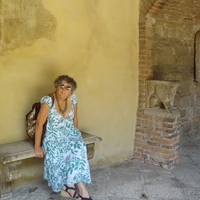


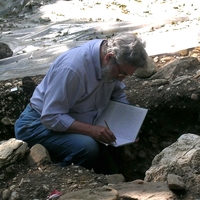

Uploads
Papers by Vanessa Baratella
this framework, the CUS-Piovego cemetery of Padua was specifically analyzed. The cemetery, dated between the middle of the 6th and the middle of the 4th centuries BCE, returned cremations – prevailing – inhumations, horse burials, and the burial of a man and a horse.
Since according to the most accredited archaeological interpretations about the inhumation phenomenon in Veneto, the inhumed individuals might have been foreigners and/or belonged to a lower social rank, a strontium isotope (87Sr/86Sr) analysis was performed on 19 inhumed individuals of the CUS-Piovego cemetery to highlight possible relations between funerary rituals and mobility dynamics at the site.
Una nuova riflessione sulle attestazioni di manufatti ceramici alloctoni in sepolture aristocratiche dei due centri ha permesso di portare alla luce differenti prospettive di lettura del fenomeno, legate in particolar modo alla diversa natura dei contesti esaminati. I casi studio qui presentati si riferiscono, per il centro atestino, alla tomba 36 di Carceri d’Este e ad un
esemplare sporadico proveniente da una delle necropoli della città, mentre per Bologna sono state analizzate le tombe 21 e 22 della necropoli di Piazza VIII Agosto unitamente ad un’olletta/boccale probabilmente parte del corredo della tomba 8 del sepolcreto ex Manifattura Tabacchi. Il riesame di queste evidenze ha consentito di approfondire l’osservazione delle
dinamiche di mobilità orizzontale non solo di specifici manufatti, ma anche di individui e di un particolare know-how artigianale.
related to the working of copper/bronze and hard animal materials (especially stag antler). The pottery from the substructure is largely composed by fragments of ollae, well preserved and temporarily reassembled: the forms are discussed in terms of typology and local association, and documented through 3D reconstructions.
A single vessel with applied decoration in relief, placed exactly in the centre of the substructure, is carefully studied and experimentally reproduced, to investigate its construction techniques and draw new socio-technical implications.
drinking are attested in a few graves of ruling elites’ members of pre-Roman Veneto. The diffusion
of these artefacts, which is known to involve not only the Veneto region and the Italic peninsula, but
the whole central and eastern Europe during the Iron Age, testifies the wide-ranging circulation of
these objects of high prestige, assumed by the leaders of communities.
The aim of this work is to systematically analyse the typology of bronze vessels and objects linked
to the drinking and feasting sphere found in proto-urban Veneto graves and comparing it with
the large and well known sample of bronze-sheet productions of the extra-Veneto and European
areas, in order to identify analogies and/or differences between the artefacts diffused in different
cultural contexts during the same time span, deepening the chronological and distributive reflection
connected to this topic.
this framework, the CUS-Piovego cemetery of Padua was specifically analyzed. The cemetery, dated between the middle of the 6th and the middle of the 4th centuries BCE, returned cremations – prevailing – inhumations, horse burials, and the burial of a man and a horse.
Since according to the most accredited archaeological interpretations about the inhumation phenomenon in Veneto, the inhumed individuals might have been foreigners and/or belonged to a lower social rank, a strontium isotope (87Sr/86Sr) analysis was performed on 19 inhumed individuals of the CUS-Piovego cemetery to highlight possible relations between funerary rituals and mobility dynamics at the site.
Una nuova riflessione sulle attestazioni di manufatti ceramici alloctoni in sepolture aristocratiche dei due centri ha permesso di portare alla luce differenti prospettive di lettura del fenomeno, legate in particolar modo alla diversa natura dei contesti esaminati. I casi studio qui presentati si riferiscono, per il centro atestino, alla tomba 36 di Carceri d’Este e ad un
esemplare sporadico proveniente da una delle necropoli della città, mentre per Bologna sono state analizzate le tombe 21 e 22 della necropoli di Piazza VIII Agosto unitamente ad un’olletta/boccale probabilmente parte del corredo della tomba 8 del sepolcreto ex Manifattura Tabacchi. Il riesame di queste evidenze ha consentito di approfondire l’osservazione delle
dinamiche di mobilità orizzontale non solo di specifici manufatti, ma anche di individui e di un particolare know-how artigianale.
related to the working of copper/bronze and hard animal materials (especially stag antler). The pottery from the substructure is largely composed by fragments of ollae, well preserved and temporarily reassembled: the forms are discussed in terms of typology and local association, and documented through 3D reconstructions.
A single vessel with applied decoration in relief, placed exactly in the centre of the substructure, is carefully studied and experimentally reproduced, to investigate its construction techniques and draw new socio-technical implications.
drinking are attested in a few graves of ruling elites’ members of pre-Roman Veneto. The diffusion
of these artefacts, which is known to involve not only the Veneto region and the Italic peninsula, but
the whole central and eastern Europe during the Iron Age, testifies the wide-ranging circulation of
these objects of high prestige, assumed by the leaders of communities.
The aim of this work is to systematically analyse the typology of bronze vessels and objects linked
to the drinking and feasting sphere found in proto-urban Veneto graves and comparing it with
the large and well known sample of bronze-sheet productions of the extra-Veneto and European
areas, in order to identify analogies and/or differences between the artefacts diffused in different
cultural contexts during the same time span, deepening the chronological and distributive reflection
connected to this topic.